Time Travel Research Center © 2005 Cetin BAL - GSM:+90 05366063183 - Turkey/Denizli
Atomic Weapon - Atom bombası
Diagram-1 Diagram -2
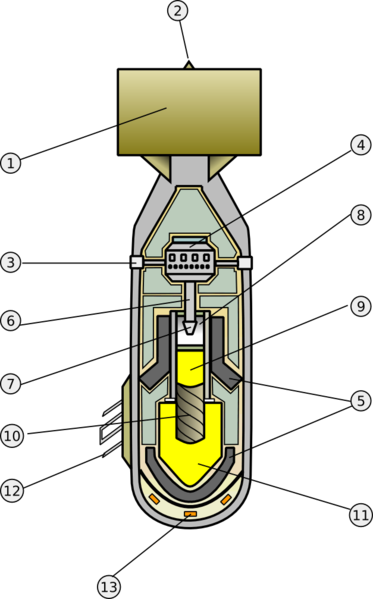
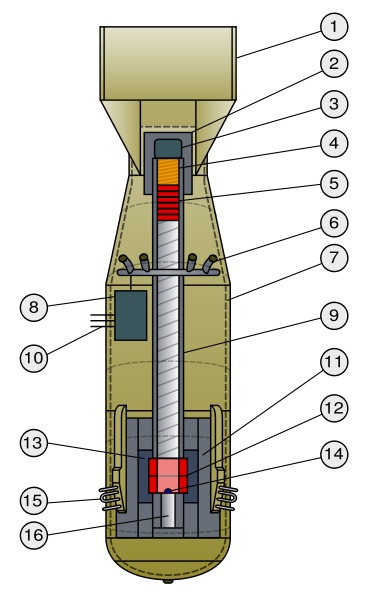
Diagram-1
- Stabilizing Tail Fins
- Tail cone
- Air inlet tubes
- Air pressure detonator
- Lead Shield container
- Detonator arm
- Detonating head
- Conventional Explosive Charge (cordite)
- Uranium-235 "Bullet" (ca. 24 kg, 16 cm long, 10 cm diameter)
- gun cylinder (not drawn to proportion: it was 180 cm long, with an inner diameter of 10 cm)
- Uranium-235 "Target" (ca. 36 kg) with receptacle (neutron reflector is just above)
- Archie radar altimeter antenna (4xAPS-13)
- Fuses (inserted to arm bomb just before dropping it)
-------------------------------------------------------------------------
Diagram-2
- Box tail fins
- Steel gun breech assembly
- Detonator
- Cordite (conventional) explosives
- Uranium-235 "projectile", six rings (26 kg) in a thin can of steel
- Baro sensing ports and manifold
- Bomb casing wall
- Arming and fusing equipment
- Gun barrel, steel, around 10 cm diameter, 200 cm length
- Arming wires
- Tamper assembly, steel
- Uranium-235 "target", two rings (38 kg)
- Tamper/reflector assembly, tungsten carbide
- Neutron initiator
- Archie fuzing radar antennas
- Recess for the boron safety plug (not shown) to be ejected into
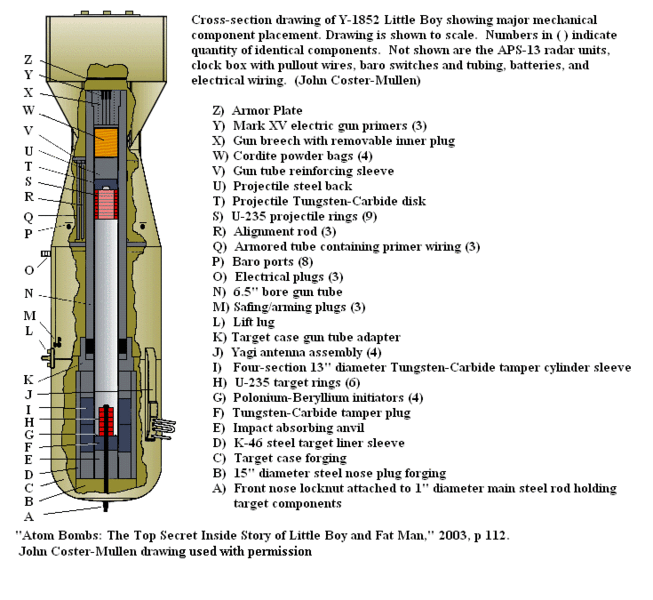

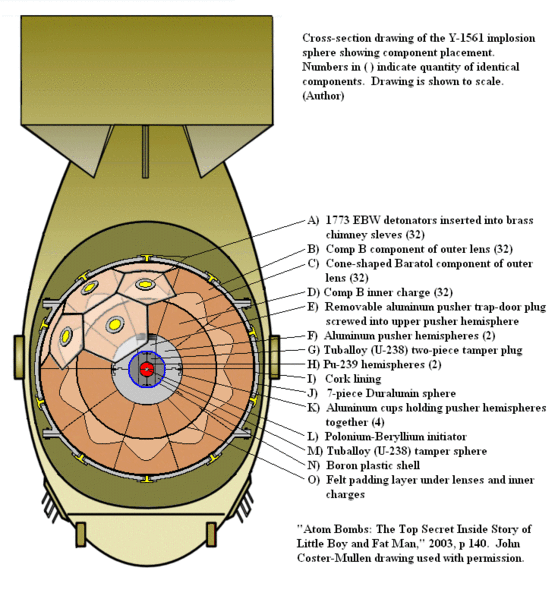
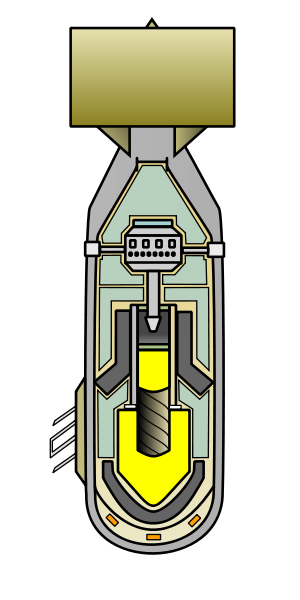
Fat Man
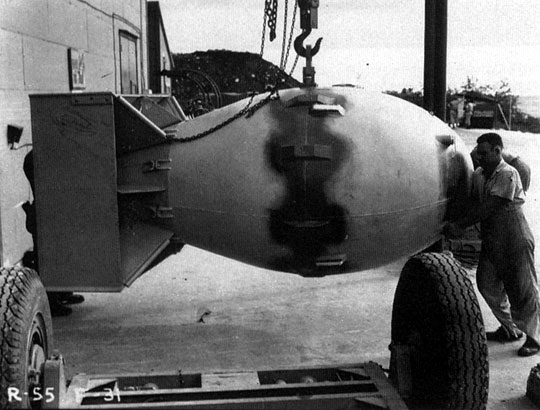
The Fat Man atomic bomb being readied on Tinian
The initial design for the plutonium bomb was also based on using a simple gun design (known as the "Thin Man") like the uranium bomb. As the plutonium was produced in the nuclear reactors at Hanford, Washington, it was discovered that the plutonium was not as pure as the initial samples from Lawrence's Radiation Laboratory. The plutonium contained amounts of plutonium 240, an isotope with a rapid spontaneous fission rate. This necessitated that a different type of bomb be designed. A gun-type bomb would not be fast enough to work. Before the bomb could be assembled, a few stray neutrons would have been emitted from the spontaneous fissions, and these would start a premature chain reaction, leading to a great reduction in the energy released.
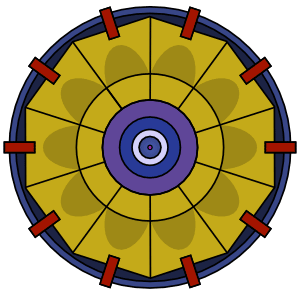
Seth Neddermeyer, a scientist at Los Alamos, developed the idea of using explosive charges to compress a sphere of plutonium very rapidly to a density sufficient to make it go critical and produce a nuclear explosion.
Fat Man Specifications
| Length: | 128.375 inches (10 feet 8 inches / 3.25 meters) |
|---|---|
| Diameter: | 60.25 inches (5 feet / 1.5 meters) |
| Weight: | 10,265 lbs (4,656 kg) |
| Yield: | 21 kilotons (+/- 10%) |

Interior of the Fatman bomb. Thanks to en:User:Fastfission for the precious information about the design and plans of the bomb.
Done with Inkscape 0.41.This is really not supposed to be accurate (the interior is still classified) but it gives a rough idea of the main parts of the implosion bombs (Gadget and Fat Man).
- AN 219 destruct fuse
- Archie radar antenna
- Plate with batteries (to detonate charge surrounding nuclear components)
- X-Unit, a firing set placed near the charge
- Hinge fixing the two ellipsoidal parts of the bomb
- High explosive pentagonal lens (12 units around the core, made of high and low velocity explosive)
- High explosive hexagonal lens (20 units around the core, made of high and low velocity explosive)
- California Parachute tail (aluminium)
- Dural casing, ~140 cm inner diameter
- Cones that contained the whole sphere
- Explosive lenses (low and high velocity)
- Nuclear material (see other figure for details about the different layers)
- Plate with instruments (radars, baroswitches and timers)
- Barotube collector
---------------------------------------------------------------------------
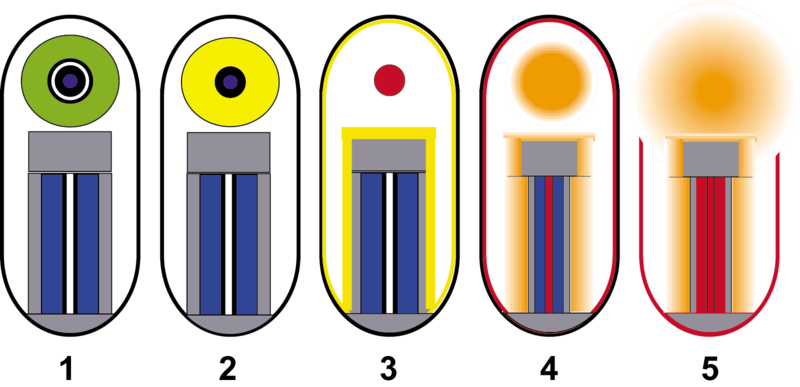
Hubbard's comments on the bogeyman of the time - the atomic bomb - are unintentionally hilarious. For instance, take his description of the way an atomic bomb works:
"There's all kinds of interesting bric-a-brac about [radiation] - that by the time you take uranium and refine it, you get an intolerant element known as plutonium. And if you have too much plutonium it goes boom, and the gamma goes flying all round, other elements are influenced and so forth. It is an intolerant element. It is artificially manufactured and is very intolerant of itself.
The way you make an atomic bomb is very interesting ... You take a piece of plutonium here and a piece of plutonium there and you put a stick between them, you see. You fix the back piece of plutonium so that it'll slide up and hit the front piece of plutonium when the stick hits something, and then you simply throw the stick. When the front piece of plutonium hits the ground, the back piece of plutonium hits the front piece of plutonium and it goes. And that's a bomb. And when it goes it releases a tremendous amount of gamma and many other items much too lengthy to catalogue."
[L. Ron Hubbard, Radiation and the Scientologist, lecture of 13 April 1957]

Gun-type atomic bomb
Hubbard appears to have had in mind the gun-type atomic bomb (as used at Hiroshima). The diagram above shows how this works. (It uses uranium, not plutonium). A small wedge of uranium is fired at a larger, target piece; upon impact, a critical mass is formed and the uranium fissions. A massive amount of energy - up to the equivalent of several tens of thousands of tons of TNT - is released. Bombs of this type are still in service, though in modern designs the case is itself made out of uranium to lighten the weight of the weapon. The other type of fission bomb (used at Nagasaki) uses a sphere of explosives around a piece of uranium or, more usually, plutonium, to implode the fissile material to a critical mass and so initiate a chain reaction. Needless to say, neither design uses "sticks" which are "thrown".
Hubbard's description of fusion bombs is equally confused, though unlike his claims about plutonium bombs, the following has been dropped from All About Radiation:
"[Plutonium] makes other things explode. So that plutonium can be put inside other elements [sic] and you get such things as fusion. It's simply an atomic bomb. The H-bomb - I don't know why they've suddenly started calling it an H-bomb - basically they're just another set of elements triggered by the original explosion of plutonium ... it takes a few pennyweights [of plutonium], that's all."
[L. Ron Hubbard, Radiation and the Scientologist, lecture of 13 April 1957]
Perhaps people called it an H-bomb because it exploded hydrogen isotopes? Fusion bombs - at least, those in service in the 1950s - rely on a large fission bomb to trigger fusion of deuterium and tritium (the aforementioned isotopes of hydrogen). The resultant explosion is equivalent to up to 50 million tons of TNT. The fallout thus produced is considerable - apart from the residue of the original fission bomb, the case of 1950s fusion bombs was made of uranium to cause further secondary fission explosions, thus increasing the overall power of the bomb. Needless to say, the device contains more than a few "pennyweights" (ounces?) of fissile material; many pounds would be more accurate.
Fusion
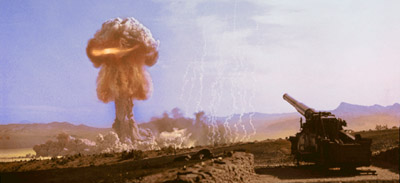 Figure 14-13a Thermalnuclear Explosion |
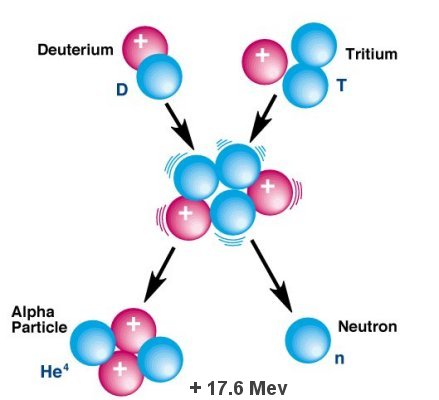
Figure 14-13b Fusion
Thermonuclear, or hydrogen bombs explode with enormous power via
uncontrolled self-sustaining chain fusion reactions (Figure
14-13a). Deuterium and tritium form helium under extremely high
temperature, providing the energy:
D + T
![]() He + n + 17.6 Mev (See Figure 14-13b).
He + n + 17.6 Mev (See Figure 14-13b).
In principle, a mixture of D and T heated to very high temperature and in
high density will start a chain fusion reaction, liberating an enormous
amount of energy.
Figure 14-13c Nuclear Detonation
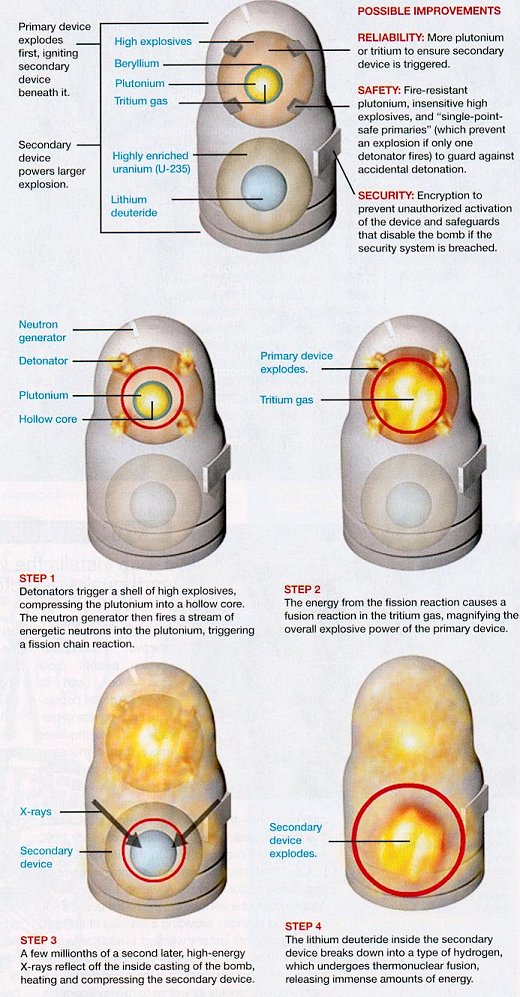
But tritium is an unstable element; an ingenious method is to have it
produced from lithium deuterate (Li6H2) in the fission
phase of the explosion -- thus one compound is used for both types of fuels
( D and T). In a thermonuclear bomb, the explosive process begins with the
detonation of what is called the primary stage. This consists of a
relatively small quantity of conventional explosives, its detonation brings
together enough fissionable uranium or plutonium to create a fission chain
reaction (sometimes magnified with a smaller fusion reaction), which in turn
produces another fission explosion inside the temper in the secondary device
and raises the temperature to several million degrees.When the temperature
of the mixture reaches 10,000,000 oK, fusion reactions take place.
The neutrons from the fusion reactions induced fission in the uranium-238
pieces (highly enriched with U-235) from the tamper and shield, which
produced even more radiation and heat and the bomb exploded (See
Figure 14-13c).
Specialized type of small fusion bombs designed to release neutrons rather
than causing further fission reactions are called neutron bombs. This is
accomplished by removing the U-238 tamper. Neutrons kill people, leaving the
hardware and buildings intact. It is a "clean" bomb. The theorized cobalt
bomb is, on the contrary, a radioactively "dirty" bomb having a cobalt
tamper. This tamper is made of cobalt-59, which is transmuted into cobalt-60
by neutrons released from the fusion reactions. Cobalt-60 has a half-life of
5.26 years and produces energetic (and thus penetrating) gamma rays. The
half-life of Cobalt-60 is just long enough so that airborne particles will
settle and coat the earth's surface before significant decay has occurred,
thus making it impractical to hide in shelters.
Hiçbir yazı/ resim izinsiz olarak kullanılamaz!! Telif hakları uyarınca bu bir suçtur..! Tüm hakları Çetin BAL' a aittir. Kaynak gösterilmek şartıyla siteden alıntı yapılabilir.
The Time Machine Project © 2005 Cetin BAL - GSM:+90 05366063183 -Turkiye/Denizli
Ana Sayfa /
index /Roket bilimi /![]() E-Mail /CetinBAL/Quantum Teleportation-2
E-Mail /CetinBAL/Quantum Teleportation-2
Time Travel Technology /Ziyaretçi Defteri /UFO Technology/Duyuru